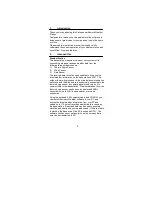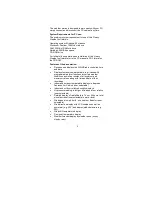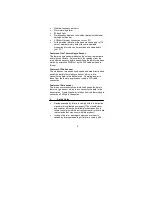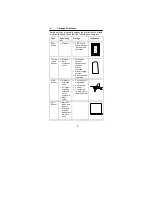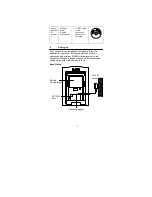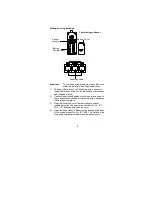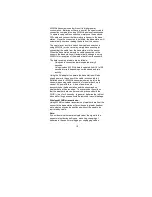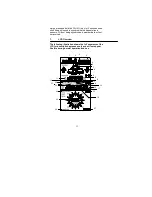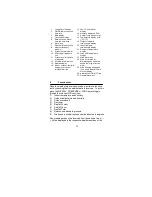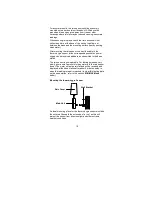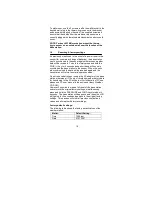
10
433MHz transmission and will result in higher power
consumption. Batteries will have a shorter life span for cable
connection compared to using 433MHz wireless transmission.
To operate using cable connection, simply use the enclosed
32ft cable and connect the thermo-hygro sensor to the base
station. Once the connection is detected, the base station will
automatically continue reading the data from the sensor.
The user may at any time switch from cable connection to
using 433MHz (or vice versa) by simply disconnecting (or
connecting) the cable from the base station to the sensor.
When the base station detects no cable connection to the
sensors, the base station will automatically change to using
433 MHz for reception of the weather data from the sensors.
The data receiving intervals are as follows:
-
Using cable connection data is updated every 8
seconds.
-
Using wireless 433 MHz data is updated from 16 to 128
second intervals depending on wind speed and rain
activity.
Using the AC adaptor to operate the base station will also
supply power to the sensor if the cable is connected to it.
Batteries used for 433MHz transmission may be left in the
sensor when using cable connection for power back up in
case of AC power failure. A loss of power would
desynchronize the base station and the sensor and no
weather data will be received. To synchronize the units so
that the weather data can be received, press and hold the
PLUS (+) key for 2 seconds. In general, batteries that will not
be used for long periods should be removed to avoid leakage.
Wireless 433MHz transmission:
Using 433MHz wireless transmission of weather data from the
sensor to the base station will provide users greater freedom
as to where units can be positioned without the need to be
restricted by cable.
Note:
If no outdoor weather data is displayed or the signal to the
sensors is lost during setting up, mounting, changing of
batteries to the sensor or plugging or unplugging cables,


